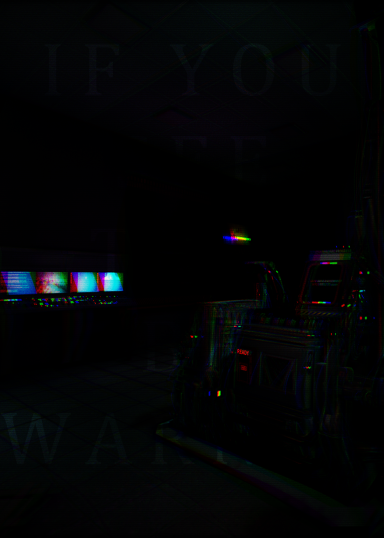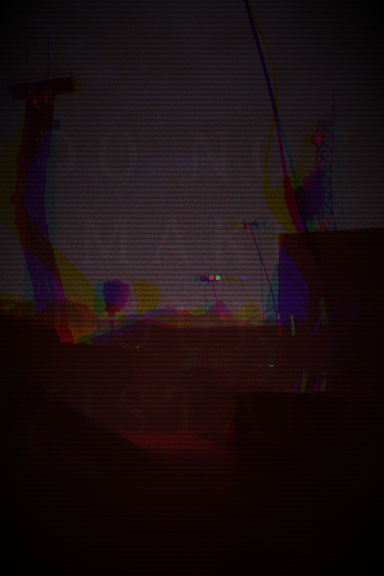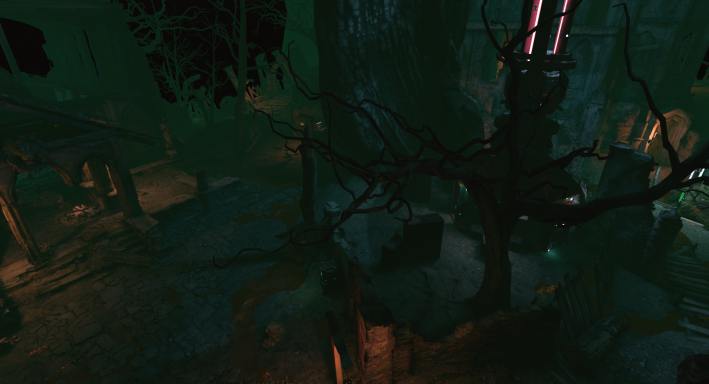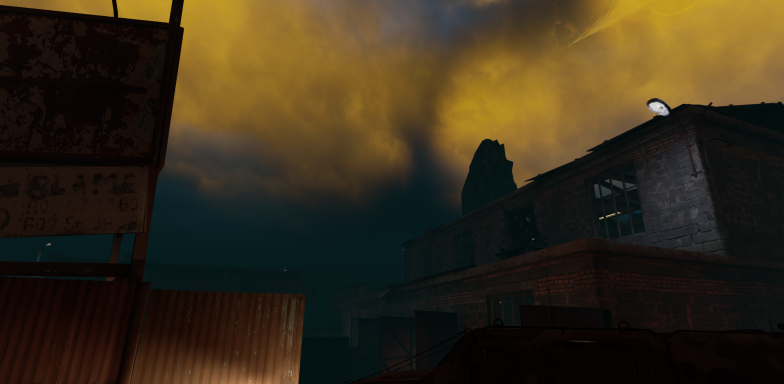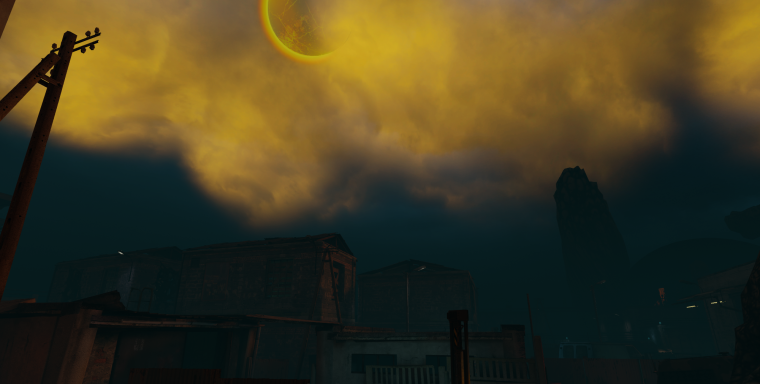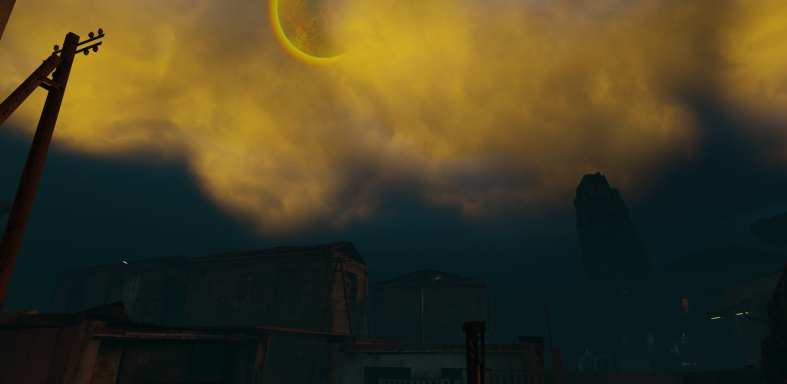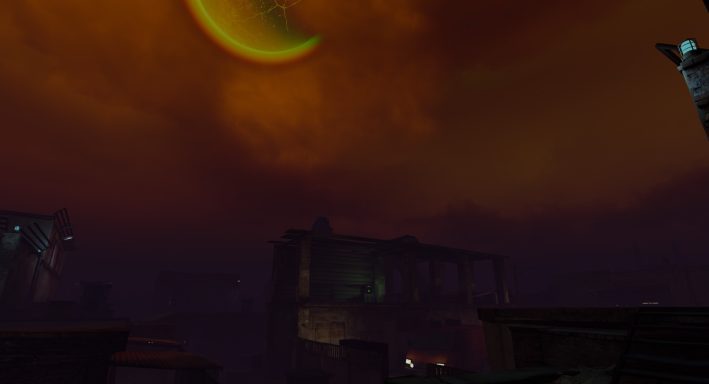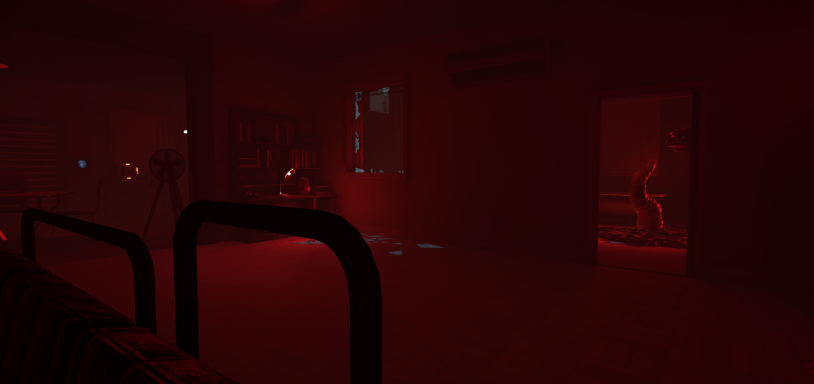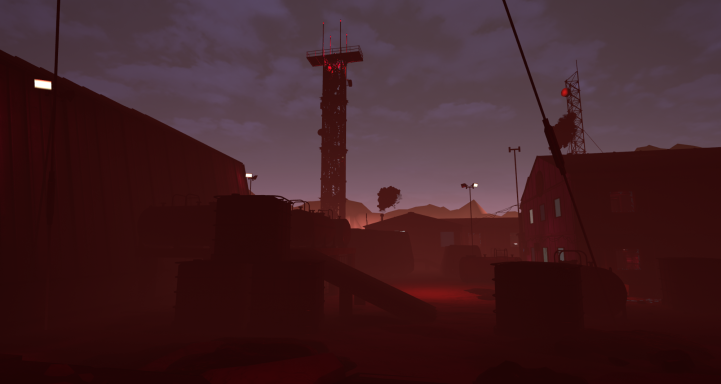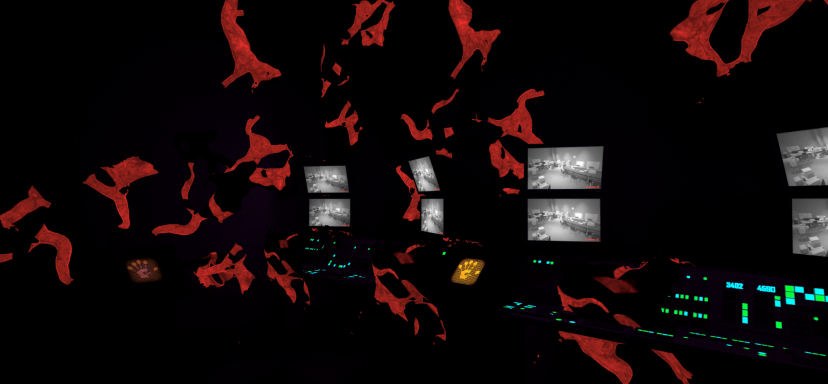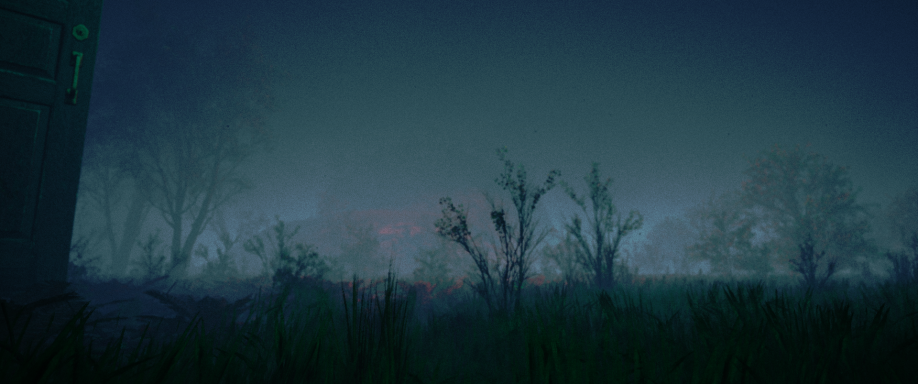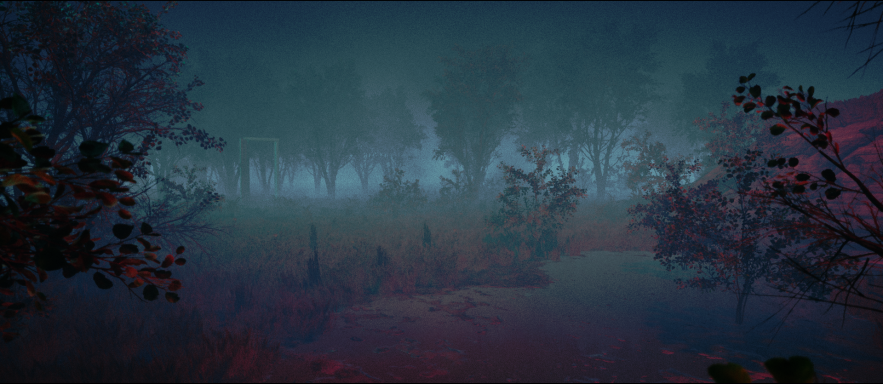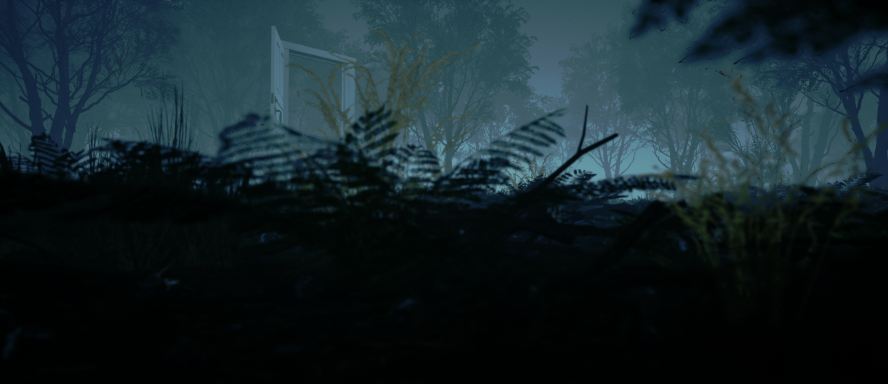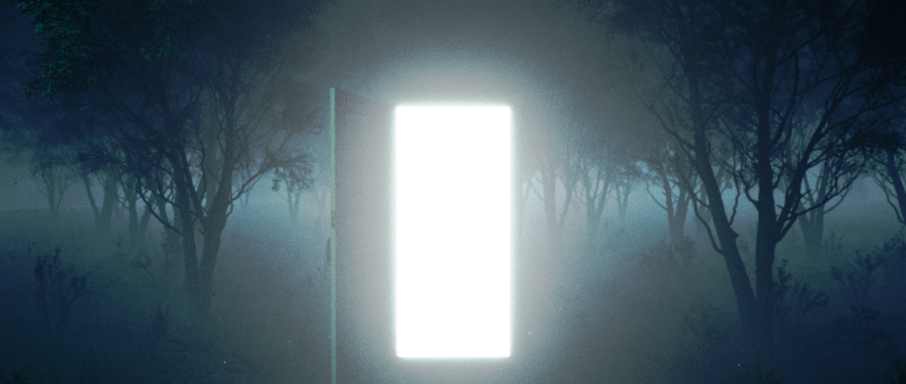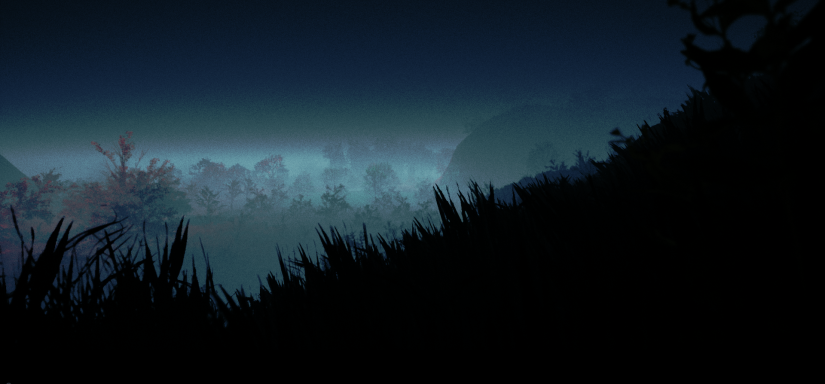Welcome to the Inverse.A sci-fi horror title I had the privilege of working on. This page is destined to be a very long scroll—but it's detailed, I tell you.
It's split into three sections: Trailers, Development Image Gallery, and Development Breakdown.
Additionally, if you'd like to see some deeper development videos, head on over here — it's like a vault... a very goopy and creepy vault — but still, a vault!
Launch Trailer
Used for the Fall 2023 official release of INVERSE.
Early Access Trailer
Used for the UploadVR Summer Showcase (2023).
Development Image Gallery
Development Breakdown
- Gameplay & Systems -
Gameplay Design - Multiplayer Match Flow
Designed the core PvP match structure, including spawn logic, game phases, objectives, and win/loss conditions. I led the design around a central "McGuffin" mechanic, establishing asymmetrical roles: Agents activate three terminals across the map while the Nul attempts to eliminate them. Explored multiple systems—permadeath, escape portals, flashlights, elevators—before refining the match into a focused loop that culminates in a final showdown once all terminals are activated.
System Design - Progression
After wrapping up the match flow, I moved on to the progression system—everything from leveling and XP pacing to unlocking perks, gear, and new Nul characters. I aimed for players to earn around 5,000 XP per match, tweaking point values to keep things balanced without pushing grindy behavior. XP requirements scaled by tiers, with better rewards at higher levels, and the full system could be completed in about 18 hours. I also broke unlockables into five pools to ease players in—starting with simple passives and building up to more advanced, risk-heavy mechanics.
System Design - Achievements
I built out a set of 16 launch achievements to encourage mastery across both Singleplayer and Multiplayer. For Solo mode, players were rewarded not just for completing each map, but for discovering hidden final objectives—subtle, puzzle-like challenges that required completing specific actions in order. In Multiplayer, achievements pushed players to invest time in both roles, from grinding out 100 matches to pulling off fast, efficient wins. The goal was to let achievements track skill growth naturally while giving players a reason to explore everything the game had to offer.
- Character Design -
Character Design - Reaper
One of my first tasks was reworking a character that eventually became the Reaper. At the time, it could climb and instantly down Agents—basically playing tag. I wanted to shift that into something more deliberate and tense, so I introduced empowered hand attacks to create a stronger sense of stalking and chasing, while still giving Agents a chance to escape. From there, we realized the Reaper needed more tools, which led to two key abilities: Dash and Bio-Blockers. Dash helped the Reaper stay threatening and unpredictable—great for cutting off Agents before they could lock doors or get away. Bio-Blockers came next, disrupting escape routes and creating panic during chases by blocking terminals and exits. Watching players scramble during testing was the confirmation we needed that the new kit worked.
Character Design - Kibbler
When the team asked for a second Nul, the only direction was “tank-type” with a concept doc ready by the next full-team meeting. I was given a gorilla animation reel as a starting point, and four of us locked ourselves in a room for six hours to flesh out what became the Kibbler—a mobile cannonball built around raw force and pressure. We settled on three core abilities: Charged Jump, a pause-and-leap mobility move that gave Agents a brief chance to escape; Rampage, a charged dash that smashed through doors and stunned Agents on impact; and Stun Pulse, a gesture-based shockwave that punished grounded players unless they timed a jump to dodge. Each ability was designed to feel heavy, simple to use, but with skillful nuance. The final version of the Kibbler delivered exactly what we wanted—a slower, overpowering presence that made Agent players instantly reassess their approach the moment they realized it wasn’t the Reaper they were up against.
- Mission Design -
Tutorial Design - Agent
The original tutorial was a linear, story-driven experience, but after presenting it to Meta, we pivoted to something more aligned with the multiplayer mode. I quickly prototyped what became the final Agent tutorial—focused on onboarding players into the core mechanics in a controlled, low-pressure setting. The roaming Nul was slowed down, terminals progressed faster, and ally AI helped mimic real match pacing. To cover anything not shown in the tutorial map (like multiplayer-only features), players were required to watch an Initiation video beforehand.
Tutorial Design - Nul
Since it came after the Agent tutorial, the Nul onboarding was much quicker to develop and focused on the Reaper, our beginner-friendly Nul. It walked players through tracking, isolating, and eliminating AI-controlled Agents in a simulated match flow. I set up a connected series of map sections separated by blast doors—players had to break through each to find and hunt down roaming Agents. While success was guaranteed, players still had to engage with key abilities, building confidence and giving them a real taste of the power that comes with playing as a Nul.
Mission Design - Lights Out
This mission evolved from an early prototype and centers on stealth—players must stay hidden and can use a limited number of traps if spotted. Originally, the map was completely dark, requiring a flashlight, but technical issues led us to remove it and adjust lighting instead. Compared to other maps, Lights Out is simple and focused: players activate terminals to power hand scanners, then figure out the correct sequence to restore the facility’s power.
Mission Design - Whispers From the Other Side
This 1v1 Agent mission pits players against the Kibbler, challenging them to revive downed teammates and ultimately take down the Nul with a pistol. Reviving adds unpredictability—downed Agents spawn in random locations, so players rely on the heartbeat sound cue to find them. Meanwhile, totems have fixed spawns to introduce a new multiplayer mechanic. The final objective delivers a memorable climax: after solving a riddle and reaching the tower’s top, players face the Nul, experiencing firsthand the corruption that defines Inverse.
Mission Design - Beginning of the End
This is the first of two Nul challenge missions, focusing on mastering the Reaper’s attacking and climbing. While the mechanics are simple to learn, true mastery requires practice, so the map offers an open playground to refine those skills. Players use dash, bio-blocker, and reaping attacks to hunt roaming Agents. Scattered around are deceased Nul whose pointing hands hint at five hidden sigils—some requiring climbing to reach. If overwhelmed, players can escape through a portal that spawns after a set time, returning them to the Inverse.
Mission Design - The Inverse
The final and most challenging Agent mission, designed to push players’ skills to the limit. Here, players must navigate while evading both the roaming Reaper and Kibbler, relying heavily on breaking line of sight and smart movement. Each objective doubles as a puzzle: after activating a terminal, players unlock a pod containing equipment and a map with a waypoint they must reach. Some objectives are tougher than others, but the real challenge comes from the constant pressure of being hunted by two Nul while alone—creating a tense, frantic experience.
Mission Design - The New Breed
This final challenge mission lets players focus on mastering the Kibbler’s core abilities across three scenarios: Stun Pulse, Rampage, and Charged Leap. Players use Charged Leap to reach high sigil locations, Rampage to smash through blast doors hiding Reapers, and Stun Pulse to stun and immobilize Agents throughout the facility.
- Narrative Design -
Narrative Design - Backstory
Inverse drops players into Act 2 of a world on edge. What was once contained has spiraled out of control, prompting the creation of Chaos Control after devastating events at the abandoned Favela Facility. Though players learn some about the game’s god-like entity, the Seraphia, much remains mysterious. As they progress, the hidden past slowly unfolds, revealing a rich and enigmatic narrative.
Narrative Design - Current Time
At launch, players step into the boots of a new Agent in Chaos Control, the Foundation’s elite Nul extermination unit. Their mission: halt the mysterious Convergence event while the Foundation works to understand and stop it. Over the first months, players slowly uncover their crucial role in this unfolding mystery.
For those exploring singleplayer, the lore deepens through collectible logs and documents revealing the origins of portal anomalies, the creation of Chaos Control, and even a hidden message from the Seraphia. These artifacts also shed light on the history and purpose of the various facilities players encounter.
- UI Design -
UI Design - Story Features
The Foundation Logs and Field Guide were developed in parallel, sharing a consistent look. The Logs serve as a growing repository of story elements unlocked during play, while the Field Guide acts as a fully stocked in-game wiki for players who skip tutorials or take breaks.
Designing the Field Guide meant prioritizing readability, leading to many iterations. Our first concept was a “Netflix-like” interface—simple to navigate but not fitting the 80s vibe we wanted. After exploring options like video integration (which the Tutorial UI eventually ruled out), we settled on an analog computer style that balanced usability with the retro aesthetic of Inverse.
UI Design - Tutorials
The tutorial UI went through the most redesigns of any interface I worked on. At first, I imagined something with scenic, loading-screen-style directions, but then shifted to a sleek, ‘Destiny-like’ look. That clean design, however, felt out of place and didn’t meet our needs.
After several iterations, the team landed on a mix of text and videos that everyone liked—but too many videos caused performance issues, including unavoidable loading hitches. After nearly a month trying to fix it, we decided to move on.
Once the Foundation Logs and Field Guide UIs were finalized, I revisited the tutorial UI and reworked it to match their analog computer style—combining cohesion with a subtle nod to that original sleek design.
UI Design - VHS Tapes
This UI was unique—it didn’t live inside a computer interface but appeared on a TV screen whenever a VHS tape was inserted, making my previous UI work irrelevant here. The main challenge was balancing several needs: showing all possible objectives, providing backstory, and leaving clear space for the player to choose ‘Play’ or ‘Eject.’ To enhance the experience, I added episode-specific distorted visuals and a star rating system. The result was a clean, intuitive UI that made completing tape objectives feel rewarding and satisfying.
UI Design - Multiplayer Lobby
The Multiplayer Options UI was the last new interface I worked on before launch. Originally, players accessed the multiplayer lobby by interacting with a hand scanner in the game world, but for Early Access, it was replaced with a traditional menu. Another developer built the initial version and passed it to me for refinement.
Since the Foundation Logs and Field Guide UIs were already done and the Multiplayer Lobby sat next to them, my main task was formatting it to match their style. The final result is a clean, intuitive menu that’s easy to navigate while staying true to Inverse’s 80s aesthetic.
UI Design - Perks Menu
At launch, the perks menu was confusing and disorganized, making future updates tricky. My goal was to create a clean, user-friendly layout that could easily scale with new content and improve player experience.
The biggest change was revamping the perk selection: instead of a small scroll wheel, perks now take center stage and include filters so players can quickly find sub-class-specific options. We also added a dedicated "Equip" button to replace the old system where perks equipped instantly—this cut down on player confusion.
Finally, I shifted the layout flow from top-to-bottom to left-to-right, making it easier to pick a perk, read details, and then equip it in a clear, step-by-step way. The aim was a seamless, intuitive process that players would immediately understand.
